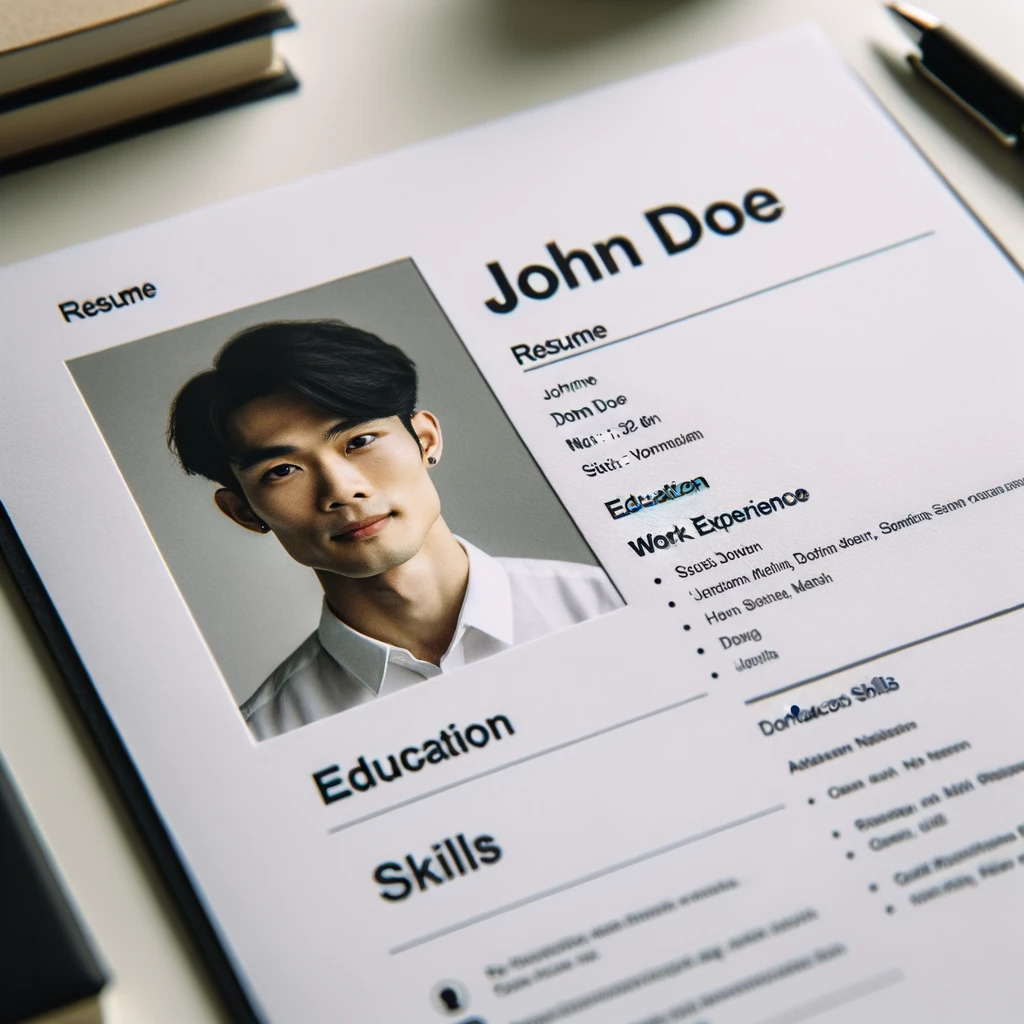Professional Advice: Should You Include Your Picture on Your Resume
Introduction
In today's competitive job market, crafting a standout resume is essential. One decision job seekers often grapple with is whether to include a photograph on their resume. This article explores the nuances of this choice, delving into the circumstances when it's appropriate, and when it's best to leave the photo out. Additionally, we'll examine how different countries have varying customs and expectations regarding resume photos. Throughout this comprehensive guide, we aim to provide job seekers with the knowledge and guidance needed to make an informed decision regarding resume photos.
Benefits of Including a Photo:
Visual Appeal: A well-placed photo can make your resume more visually appealing and memorable. It can help you stand out in a stack of text-only resumes.
Relevance to the Job: In professions where physical appearance matters, such as modeling, acting, or entertainment, including a professional headshot can demonstrate your suitability for the role.
Personal Branding: For individuals seeking roles in the creative industry or positions where personal branding is vital, a photo can reinforce your unique identity and style.
Drawbacks of Including a Photo:
Bias and Discrimination: One of the most significant drawbacks of including a photo is the potential for bias. Hiring decisions should be based on qualifications and skills, not physical appearance. Photos may lead to discrimination, conscious or unconscious, based on factors like race, age, or gender.
ATS Compatibility: Applicant tracking systems (ATS) are commonly used in the hiring process. Resumes with photos might not be processed correctly by ATS software, potentially leading to rejection before human eyes see your application.
Space Constraints: A resume should be concise, ideally one or two pages. Including a photo can consume valuable space that could be better used to showcase your professional achievements and qualifications.
Cultural Considerations:
The acceptability of resume photos varies widely across different countries and regions. Understanding these cultural differences is crucial for job seekers. Here's a deeper look at this aspect:
United States, Canada, Australia, and the UK: In these countries, it is generally considered customary not to include a photo on your resume. Strict anti-discrimination laws discourage employers from considering physical appearance in hiring decisions.
Europe: In several European countries, including Austria, The Netherlands, Belgium, France, Germany, Portugal, and Spain, it is more common and even recommended to include a photo on your resume. Employers in these regions may expect to see a candidate's photo.
International Considerations: When applying for positions in international organizations or companies with a global presence, understanding the cultural norms of the specific country or region can be critical. Job seekers may need to adapt their resume accordingly.
When to Include a Picture on Your Resume:
Building on the information in the original article, let's explore in greater depth the situations when it's appropriate to include a photo:
Entertainment Industry: In professions like acting, modeling, or television hosting, your physical appearance is integral to your job. It's not only acceptable but often expected to include a headshot along with your resume.
Public-Facing Roles: For roles where you represent the company in a public-facing capacity, such as sales, public relations, or event management, employers may want to ensure that you have an approachable and trustworthy demeanor.
LinkedIn Integration: Instead of adding a photo directly to your resume, some job seekers opt to include their LinkedIn profile URL in the resume header. This allows employers to view your professional photo on your LinkedIn profile without taking up valuable resume space.
Tips for Taking a Good Resume Photo:
Taking a high-quality resume photo is essential if you decide to include one. Here are detailed tips for ensuring a professional and effective photo:
Attire: Wear attire appropriate for the role you're applying for. For formal positions like attorneys, opt for a suit. In contrast, for business casual roles, choose professional yet approachable clothing. Avoid flashy fashion statements.
Grooming: Ensure your hair is well-styled, and if you wear makeup, keep it tasteful and professional. Men should consider grooming facial hair.
Photography Techniques: If taking your own photo, use a tripod and timer for stability. A professional photographer can help with angles, lighting, and posing.
Flattering Angle: Position the camera slightly higher than eye-level for a flattering image. Crop the photo to include only your head and shoulders.
Authentic Smile: Ensure your smile is genuine and reaches your eyes. Avoid overly formal or forced expressions. Smile naturally and confidently.
Why Including a Resume Photo Might Hurt Your Chances:
To elaborate on the potential drawbacks of including a resume photo, it's essential to delve into these aspects further:
Bias and Discrimination: Strict anti-discrimination laws in some countries make employers wary of resumes with photos. To protect themselves from potential lawsuits, many employers avoid such resumes.
ATS Scan Problems: The article should expand on how ATS software may struggle with photo-containing resumes, leading to potential rejection before human review.
Space Constraints: Discuss in more detail how space on a resume is limited, and adding a photo can eat into valuable space needed for crucial information.
First Impressions: Explore the psychology behind first impressions and how including a photo can impact a hiring manager's perception, consciously or unconsciously.
Conclusion:
In conclusion, whether to include a picture on your resume is a nuanced decision that should be based on your specific circumstances and the expectations of your target job market. Understanding the cultural norms and legal considerations in your region is essential. While there are situations where including a photo can be beneficial, such as in the entertainment industry or public-facing roles, it's crucial to weigh the potential benefits against the risks of bias and discrimination. Ultimately, job seekers should prioritize showcasing their qualifications, skills, and experience as the primary factors in their resumes, as these are the elements that truly matter in securing employment.









